Nasa's Curiosity rover: 3,000 days on Mars
- Published
The US space agency (Nasa) is about to put its latest rover, Perseverance, on Mars. But we shouldn't forget that the existing robot, Curiosity, is still there and working well following its landing in equatorial Gale Crater back in 2012. Curiosity celebrates 3,000 Martian days, or Sols, on the surface of the Red Planet on Tuesday. The Mission Science Team, external has collected together a series of pictures that record some of the rover's major achievements.

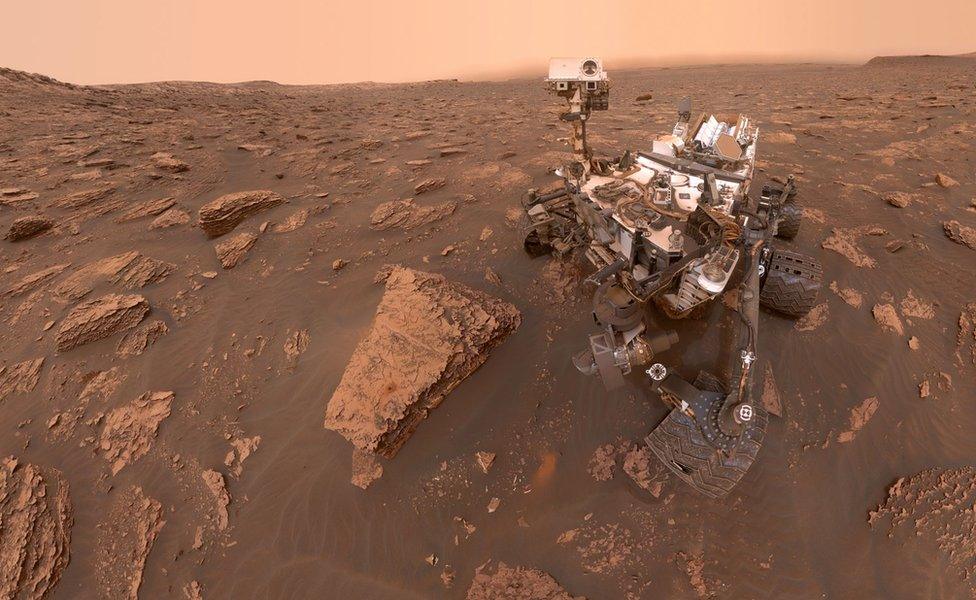
When we got these images down in June 2018 it was a big relief for the team, even though it was a rather dusty time on Mars. That's because it marked the restart of drilling operations by the rover. "Duluth" was the first rock sample successfully drilled (see centre of the image for the drill hole) since October 2016. A mechanical issue had taken the drill offline. By June 2018, a new technique had been planned and tested by the JPL engineers, letting us get back to the crucial drilling, without which our work had been held back.

What does an eclipse look like on Mars?
Twice every Martian year, near the seasonal equinoxes, the paths of the Martian moons Phobos and Deimos cross in front of the Sun as seen by Curiosity. This animation shows the 22km diameter Phobos in transit across the sun on Sol 2359. The transit lasted about 35 seconds. The precise timing of transits measured in observations like this helps scientists understand the tidal interactions between Phobos and Mars.

Noctilucent clouds shimmer high in the Martian sky
The tiny amount of water vapour in the thin atmosphere of Mars can form clouds, especially in the cooler times of year and around high peaks. Curiosity has observed thin clouds overhead many times in its mission. But on Sol 2410, it was able to observe a special kind of cloud that forms at very high altitudes, in this case about 31km above the surface. These clouds are called "noctilucent" because they remain illuminated by the sun even after sunset has occurred at the surface.


Building up an extraordinary view of another world, pixel by pixel
This stunning panorama is the highest-resolution panorama (1.8 billion pixels, external) yet of the Martian surface and was taken in late 2019 at Glen Torridon. Because preparing such panoramas takes numerous photographs (there are over 1,000 telephoto images in this mosaic) over many days' work, we don't often have a chance to produce them. We had been studying the clay-rich rocks in Glen Torridon and named it after an important area of ancient sediments in Scotland.


A robot geologist practises some astronomy
On Sol 2784 Curiosity paused to capture a family portrait of Earth and its planetary neighbours. The foreground shows a cliff on Mars; while in the sky, one can see both Venus and Earth appearing like stars in the dusty evening sky.


The youngest sediments are to be found the higher up Mount Sharp you go
In the summer of 2020, Curiosity's science team began driving the rover toward a new and higher region on Mount Sharp where it will explore rocks rich in sulphate minerals. Because Mount Sharp was formed as layers of sediment were deposited by water and wind, the rocks get younger with height. The sulphate minerals in this region may have formed because Mars went from wetter conditions—good for forming clay minerals—to drier conditions that could leave salts such as sulphates behind.

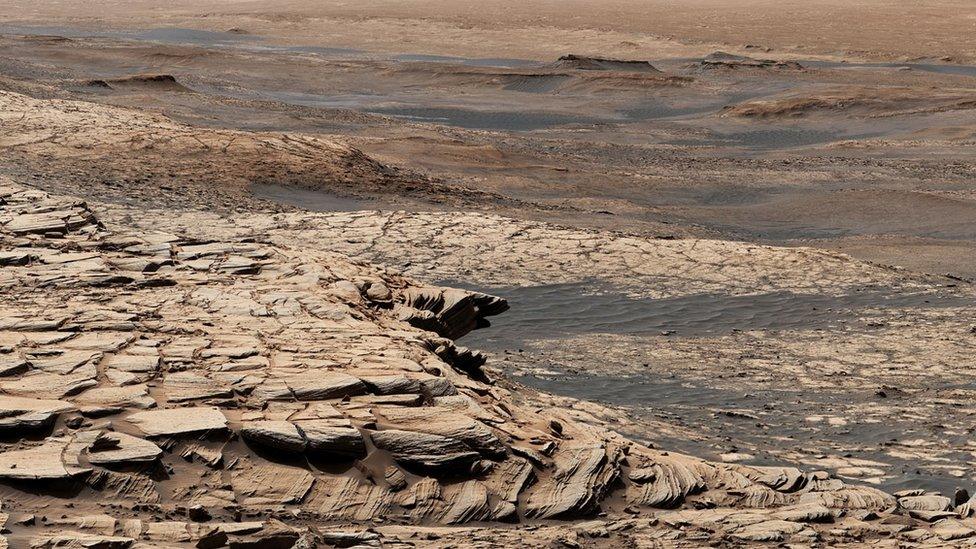
Like so many grand vistas, this view of Greenheugh pediment is made up of multiple individual images
On Sol 2696, Curiosity completed its steepest drive of the mission as it ascended the sandy slope below the Greenheugh pediment, a broad flat surface capped by a sandstone layer. The rover took these images on Sol 2729 as it looked across the layered sandstones and back over the Glen Torridon region below.

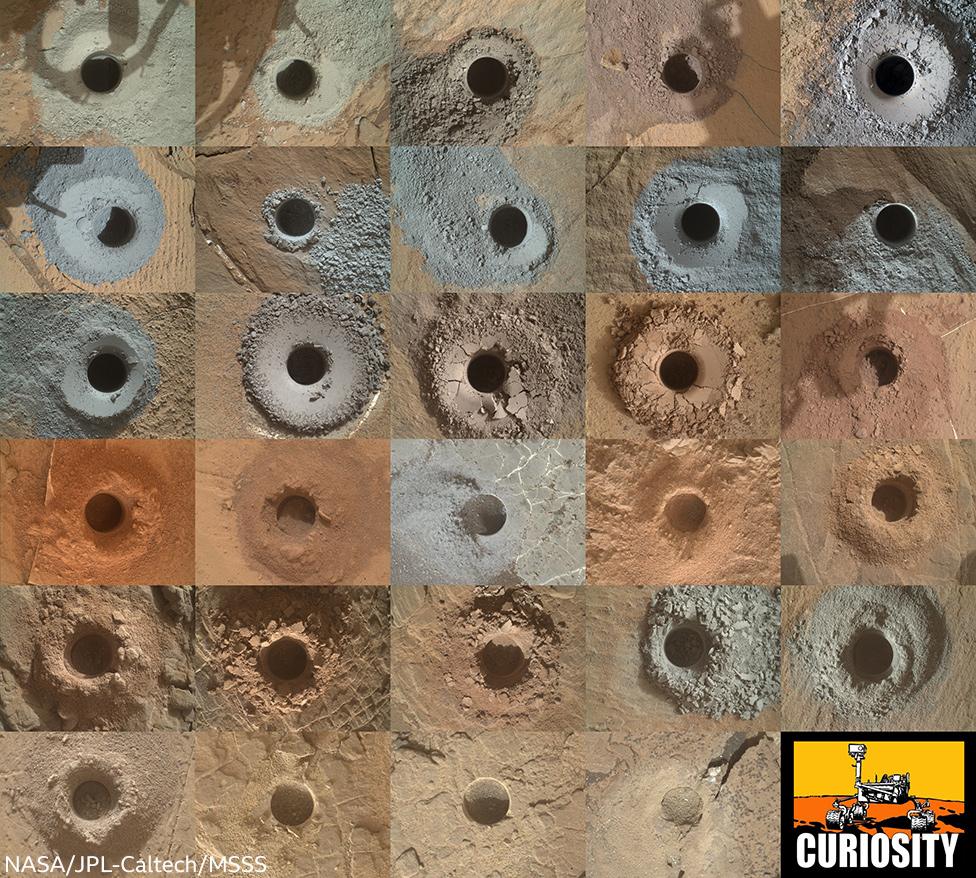
Get under the surface and the Red Planet is all sorts of colours
We all know Mars as the Red Planet, we see that in the night sky. However, as our drill tailings gallery shows, once we drill just a small depth in to the interior, Mars can be very different. We have drilled successfully 29 times now and the sediments show a range of hues from ochre-red to blue-grey reflecting the minerals and fluids that passed through the ancient rocks. Drilling allows us to get through the top most, oxidized surface that has been most exposed to cosmic radiation.

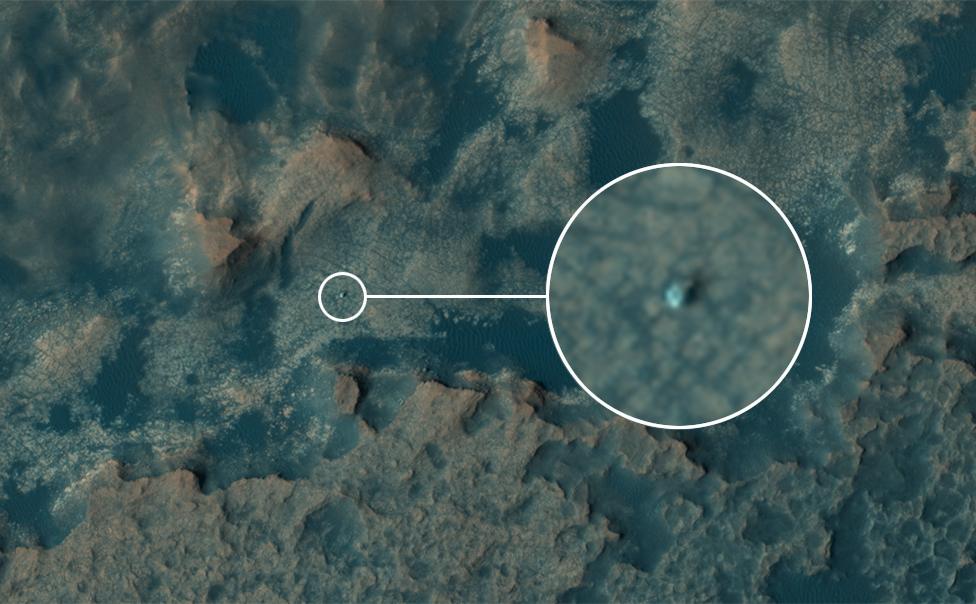
The Mars Reconnaissance Orbiter looks down on Curiosity from an altitude of 266km
Curiosity in isolation at Glasgow. Here we snapped the Curiosity rover with the HiRISE camera on the Mars Reconnaissance Orbiter. Each of the pixels is about 25cm, so we can pick out the rover quite nicely in the centre of the field of view. We had just completed a drill at a site we named Glasgow. Because of the lockdown an even greater proportion of rover operations was being done by staff working from home. But after eight Earth years, more than three Martian years and 29 drill holes - all is still working pretty well.
The HiRISE image covers a region called Greenheugh pediment, part of the lower slopes of Mount Sharp which we will be slowly driving up over the next three years of an extended mission. It's in this next part of the mission that we expect to find a different sort of ancient environment to the earlier parts of the mission, with lots of sulphate minerals.

Whipping up a "dust devil" on Mars
With no rain in the current climate, dust accumulates on the surface of Mars. Winds energized by the Sun's heating of the ground can form large and well-formed whirlwinds known as vortices. They mostly are invisible, but when a strong vortex drifts over a dusty surface, dust is lifted into it and reveals its shape. This animation was shot over four minutes on Sol 2847 and captured a "dust devil" vortex at a distance of one-half to one km from the rover. The dust devil is about 5m wide and at least 50m tall.

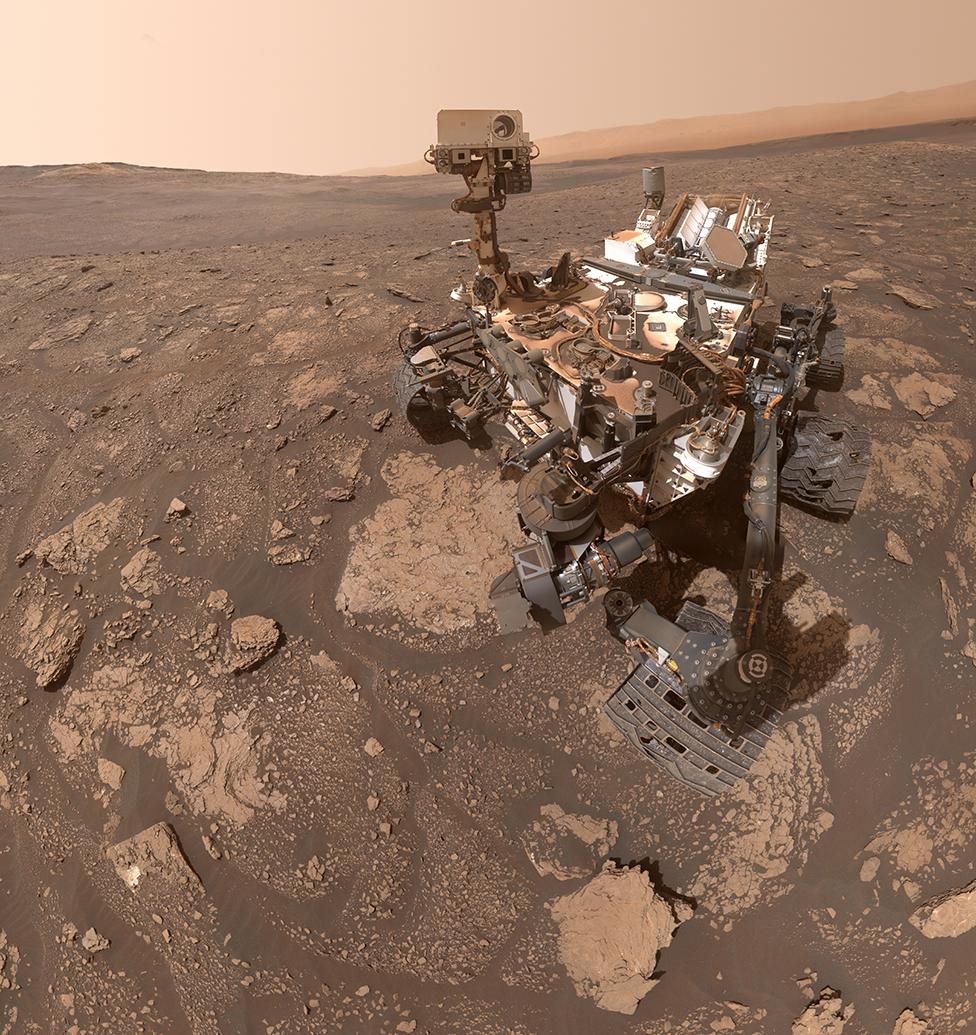
In celebration of the 19th Century palaeontologist Mary Anning
Curiosity took its latest "selfie" on Sol 2922 to celebrate the successful drilling of three holes on the rock slab in front of it. The first two holes were named after Mary Anning, the 19th Century palaeontologist whose findings in the seaside cliffs of southwest England contributed to the understanding of prehistoric marine life on Earth. Material from these holes was used for two "wet chemistry" experiments, in which it was mixed with liquid chemicals to extract organic molecules that may be preserved in the rock. Rocks at this site formed from sediment carried in ancient streams and lakes. The wet environment and the presence of organic molecules in several rocks studied by Curiosity suggest that ancient Mars was habitable, capable of supporting life, if it ever took hold. The third hole was drilled to study dark nodules visible in the corner of the slab.

A Martian day, or Sol, lasts 24 hours and 39 minutes. The 3,000th Sol of the Curiosity mission is marked on 12 January. The robot landed on the planet on 6 August 2012.